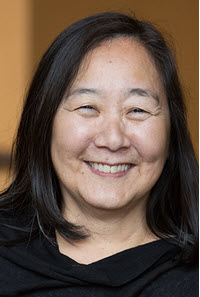Abstract
Excerpted From: Lorraine K. Bannai, The Role of Lawyers During the Japanese American Incarceration, 68-SEP Advocate (Idaho) 16 (September, 2025) (38 Footnotes) (Full Document)
 October 28, 2025, will mark the 80 anniversary of the closing of the American concentration camp at Minidoka, Idaho. Minidoka has profound meaning, of course, for the over 13,000 Japanese Americans who were imprisoned there. They were among the 126,000 men, women, and children of Japanese ancestry ordered from their West Coast homes and incarcerated in camps across the interior of the country with no charges or hearings and based solely on their race.
October 28, 2025, will mark the 80 anniversary of the closing of the American concentration camp at Minidoka, Idaho. Minidoka has profound meaning, of course, for the over 13,000 Japanese Americans who were imprisoned there. They were among the 126,000 men, women, and children of Japanese ancestry ordered from their West Coast homes and incarcerated in camps across the interior of the country with no charges or hearings and based solely on their race.
This anniversary also provides an important time of reflection for those of us who are lawyers, reminding us of our essential roles in a civil society and the choices we face in upholding the rule of law. The story of the Japanese American incarceration is full of lawyers. There are examples of the best in our profession--lawyers who challenged injustice against a racial minority and the offense to our constitution.
But there are also stories of lawyers who could have done better--the lawyers who were architects and enablers of one of the greatest deprivations of civil rights in recent history, as well as those who sought to defend the incarceration in the courts and to win at all costs, even if it meant suppressing evidence before the U.S. Supreme Court.
The Ultimate Exclusion After a History of Exclusion
The Japanese American incarceration has to be viewed not as an isolated act, but as an ultimate exclusion after a history of exclusion. Soon after Japanese immigrants arrived in this country, anti-immigrant groups sought to get rid of them as threats to “American” life.
Japanese immigrants were unable to become naturalized citizens. Japanese Americans were prohibited from marrying whites. Alien Land Laws barred immigrant Japanese from purchasing the land they worked. And ultimately, in 1924, the exclusionists won a ban on further Japanese immigration to the United States. Japanese Americans were viewed as foreign, untrustworthy, and perceived as economic threats.
The bombing of Pearl Harbor took place against that backdrop of racial animosity. In the days following, immigrant community leaders--Shinto and Buddhist priests, Japanese language teachers, newspaper editors, and others-- were picked up under the Alien Enemies Act, an act now prominently in the news to justify current detentions and deportations. In the months following, the public, the popular press, civic organizations, and public officials at every level of government called for the mass removal of all persons of Japanese ancestry, arguing that they, as an entire group, posed a threat of espionage and sabotage.
Lawyers were among the loudest voices. Earl Warren, for example, who would be celebrated as a champion of civil rights during his tenure on the U.S. Supreme Court, advocated for the removal of Japanese Americans while serving as the Attorney General of California.
On February 19, 1942, in response to calls like Warren's, President Franklin Delano Roosevelt signed Executive Order (“EO”) 9066. It was not only a disturbingly blank check for military authorities but despite its neutral wording, it was clear it was targeted at the West Coast Japanese American community.
Congress made violation of any orders to be issued under EO 9066 a federal offense. However, nothing in the statute identified the specific conduct criminalized; that conduct would be described by not-yet-issued military orders. One U.S. senator criticized the bill's vagueness: “I think this is probably the 'sloppiest’ criminal law I have ever read or seen anywhere ... I do not want to object, because the purpose of it is understood .... I have no doubt that in peacetime no man could ever be convicted under it.”
Under authority of EO 9066, Lieutenant General John L. DeWitt, the commanding officer responsible for the Western states, proceeded to issue a series of orders. One was a curfew issued against Italian and German immigrants, as well as all persons of Japanese ancestry, immigrants and citizens alike. That was followed by 108 Civil Exclusion Orders (which I'll refer to as “removal orders”) posted in neighborhood after neighborhood, up and down the coast requiring persons of Japanese ancestry to report for removal. Two-thirds of those removed and incarcerated were, like my parents, American citizens.
[. . .]
Korematsu ... stands as a constant caution ... that in times of distress the shield of ... national security must not be used to protect governmental actions from close scrutiny. It stands as a caution that in times of international hostility ... our institutions, legislative, executive and judicial, must be prepared to exercise their authority to protect all citizens from the petty fears and prejudices that are so easily aroused.”
Finally, the wartime incarceration reminds us of the critical importance of not turning away when we have the ability to act. We need to preserve civil liberties, not only for vulnerable communities, but also for future generations. During World War II, few spoke out to protect Japanese Americans. Although some brave individuals and a few religious groups like the Quakers opposed the incarceration, none of the major civil rights groups at the time opposed it when it occurred, and a silent majority let it happen.
As lawyers with the proverbial keys to the courthouse, places like Minidoka remind us of what happens when our system of laws fails and that it uniquely falls on us lawyers to be the first responders.
Lorraine K. Bannai is Professor Emerita at Seattle University School of Law and helped direct the Fred T. Korematsu Center for Law and Equality there.


